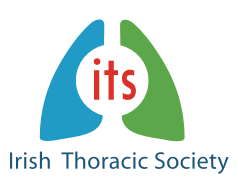CLUSTER ANALYSIS IN THE COPD GENE STUDY IDENTIFIES SUBTYPES OF SMOKERS WITH DISTINCT PATTERNS OF AIRWAY DISEASE & EMPHYSEMA (Castaldi et al, Thorax 2014; 69(5): 415-22)
Link to original journal article
The authors sought to identify subgroups of smokers by applying cluster analysis to 10192 smokers from the COPD Gene study. They identified four clusters as follows: (1) resistant smokers – i.e. no/mild obstruction & minimal emphysema despite heavy smoking (2) mild upper lobe emphysema-predominant (3) airway disease – predominant (4) severe emphysema. All clusters were strongly associated with COPD-related clinical characteristics, including exacerbations & dyspnoea.
Summary: Quantitative CT is useful for classifying smokers
AUTOMATED QUANTIFICATION OF RADIOLOGICAL PATTERNS PREDICTS SURVIVAL IN IDIOPATHIC PULMONARY FIBROSIS (Maldonado et al, Eur Respir J 2014; 43:204-12)
Link to original journal article
The hypothesis of this study was that short-term radiological changes in IPF may be predictive of survival. Authors examined baseline & follow-up HRCT scans in 55 patients with IPF using a novel software tool (CALIPER). A mean interval change (8 months) in volume of reticular densities, total volume of interstitial abnormalities & the percent total interstitial abnormalities were predictive of survival after a median follow up of 2.4 years.
Summary: CT may complement FVC & DLCO in monitoring patients with IPF.
A CONSENSUS DOCUMENT FOR THE SELECTION OF LUNG TRANSPLANT CANDIDATES: 2014 – AN UPDATE FROM THE PULMONARY TRANSPLANTATION COUNCIL OF THE INTERNATIONAL SOCIETY FOR HEART AND LUNG TRANSPLANTATION (Well et al, J Heart Lung Transplant 2015; 34, 1-15)
Link to original journal article
This is an updated on previous guidelines published in 2006 & makes specific recommendations on the timing of referral and of listing for lung transplantation. It includes discussions on lung allocation scores, bridging to transplant with mechanical circulatory and ventilator support, and expanded indications for lung transplantation (e.g. increasing age). Early referral is crucial, particularly for patients with interstitial lung disease.
Summary: In the absence of high-grade evidence to support decision making, these consensus guidelines remain part of a continuum of expert opinion based on available studies and personal experience.
LUNG TRANSPLANTATION FROM DONATION AFTER CARDIOCIRCULATORY DEATH: A SYSTEMATIC REVIEW AND META-ANALYSIS (Krutsinger et al, J Heart Lung Transplant 2014; Nov 10, In Press)
Link to original journal article
A systematic review & meta-analysis was performed comparing lung transplant outcomes between donation after cardiac death (DCD) & conventional donation after brain death (DBD). There was no difference in 1 year mortality, primary graft dysfunction, or acute rejection between DCD (n-271) & DBD (n-2369). However, the 6 studies analysed were small retrospective studies.
Summary: DCD appears to be a safe & effective method to expand the donor pool.
SURVIVAL IN SENSITISED LUNG TRANSPLANT RECIPIENTS WITH PERIOPERATIVE DENSITISATION (Tinckam et al, Am J Transplant 2015; 15: 417-26)
Link to original journal article
Patients with donor-specific anti-HLA antibodies were densitised in the perioperative phase with plasmapheresis, IV-Ig and anti-thymocyte globulin, as well as long term immunosuppression with mycophenolate mofetil in addition to the standard of care immunosuppression with cyclosporine & prednisolone. Al though the numbers were low (only 23 completing the full protocol), there was no difference in primary graft dysfunction, infection, 30 or 1 year-survival between the desensitised group & un-sensitised recipients.
Summary: Perioperative desensitisation may be a viable treatment option in patients with donor-specific anti-HLA antibodies, however further studies are needed.
